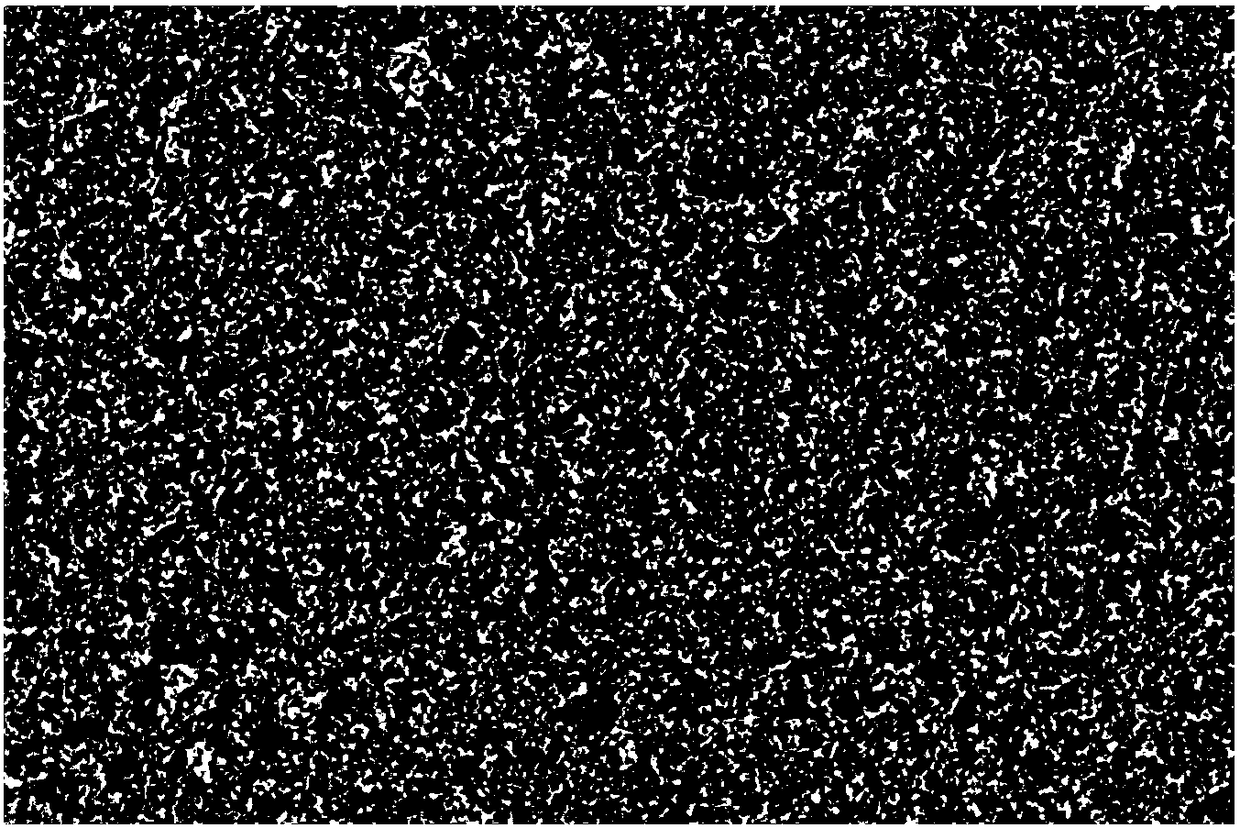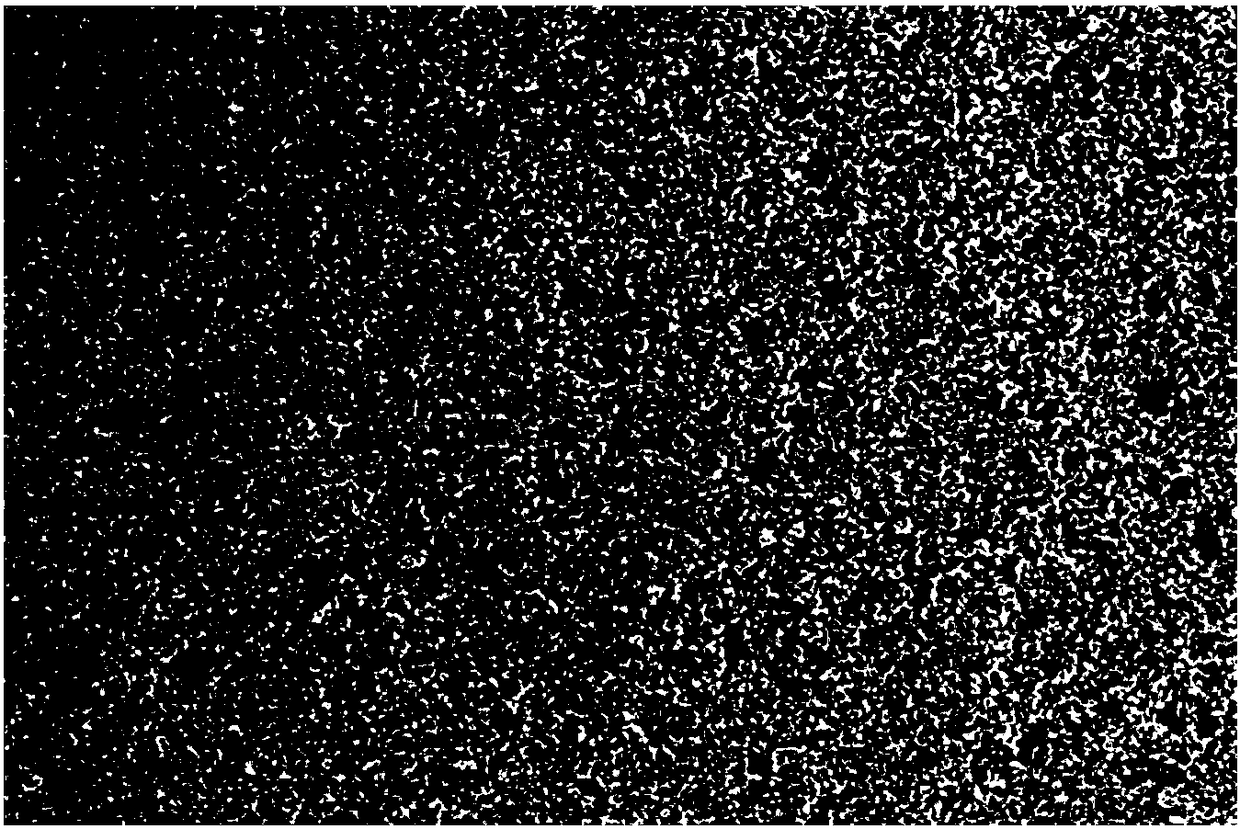High oil stain resistance oil-water separation membrane and its preparation method and application
A technology of oil-water separation membrane and oil pollution, which is applied in separation methods, liquid separation, chemical instruments and methods, etc. It can solve the problems of low anti-pollution performance, high membrane separation pressure, and low membrane flux.
- Summary
- Abstract
- Description
- Claims
- Application Information
AI Technical Summary
Problems solved by technology
Method used
Image
Examples
Embodiment 1
[0036] (1) Preparation of fluorine-containing resin: take 8 g of methacrylic acid (MAA), 13 g of n-butyl acrylate (BA), 18 g of fluorine-containing monomer dodecafluoroheptyl methacrylate (G04), and azobisisobutyronitrile ( AIBN) 1g, propylene glycol methyl ether acetate (PMA) 60g;
[0037] Add 40% propylene glycol methyl ether acetate into the three-necked flask, and raise the temperature of the liquid in the bottle to 70°C under the stirring of the mechanical stirring blade;
[0038] 20% propylene glycol methyl ether acetate, 30% methacrylic acid, 30% n-butyl acrylate, 40% azobisisobutyronitrile and 50% fluorine-containing monomer dodecafluoroheptyl methacrylate Mix evenly to make the first mixed solution, drop the first mixed solution into the three-necked flask with a dropping funnel, continue to react for 1.5 hours after the dropwise addition, and keep the liquid temperature in the bottle at 70°C;
[0039] 20% propylene glycol methyl ether acetate, 70% methacrylic acid, ...
Embodiment 2
[0046] (1) Preparation of fluorine-containing resin: Take 6 g of methacrylic acid (MAA), 15 g of n-butyl acrylate (BA), 25 g of fluorine-containing monomer dodecafluoroheptyl methacrylate (G04), and azobisisobutyronitrile ( AIBN) 2g, propylene glycol methyl ether acetate (PMA) 52g;
[0047] Add 35% propylene glycol methyl ether acetate into the three-necked flask, and raise the temperature of the liquid in the bottle to 65°C under the stirring of the mechanical stirring blade;
[0048] 25% propylene glycol methyl ether acetate, 35% methacrylic acid, 35% n-butyl acrylate, 45% azobisisobutyronitrile and 45% fluorine-containing monomer dodecafluoroheptyl methacrylate Mix evenly to make the first mixed solution, drop the first mixed solution into the three-necked flask with a dropping funnel, continue to react for 2 hours after the dropwise addition, and keep the liquid temperature in the bottle at 65°C;
[0049] 25% propylene glycol methyl ether acetate, 65% methacrylic acid, 65...
example 3
[0056] (1) Preparation of fluorine-containing resin: take 15 g of methacrylic acid (MAA), 10 g of n-butyl acrylate (BA), 30 g of fluorine-containing monomer dodecafluoroheptyl methacrylate (G04), and azobisisobutyronitrile ( AIBN) 3g, propylene glycol methyl ether acetate (PMA) 42g;
[0057] Add 45% propylene glycol methyl ether acetate into the three-necked flask, and raise the temperature of the liquid in the bottle to 75°C under the stirring of the mechanical stirring blade;
[0058] 15% propylene glycol methyl ether acetate, 25% methacrylic acid, 25% n-butyl acrylate, 35% azobisisobutyronitrile and 55% fluorine-containing monomer dodecafluoroheptyl methacrylate Mix evenly to make the first mixed solution, drop the first mixed solution into the three-necked flask with a dropping funnel, continue to react for 1 hour after the dropwise addition, and keep the temperature of the liquid in the bottle at 75°C;
[0059] 15% propylene glycol methyl ether acetate, 75% methacrylic a...
PUM
 Login to View More
Login to View More Abstract
Description
Claims
Application Information
 Login to View More
Login to View More - R&D
- Intellectual Property
- Life Sciences
- Materials
- Tech Scout
- Unparalleled Data Quality
- Higher Quality Content
- 60% Fewer Hallucinations
Browse by: Latest US Patents, China's latest patents, Technical Efficacy Thesaurus, Application Domain, Technology Topic, Popular Technical Reports.
© 2025 PatSnap. All rights reserved.Legal|Privacy policy|Modern Slavery Act Transparency Statement|Sitemap|About US| Contact US: help@patsnap.com



